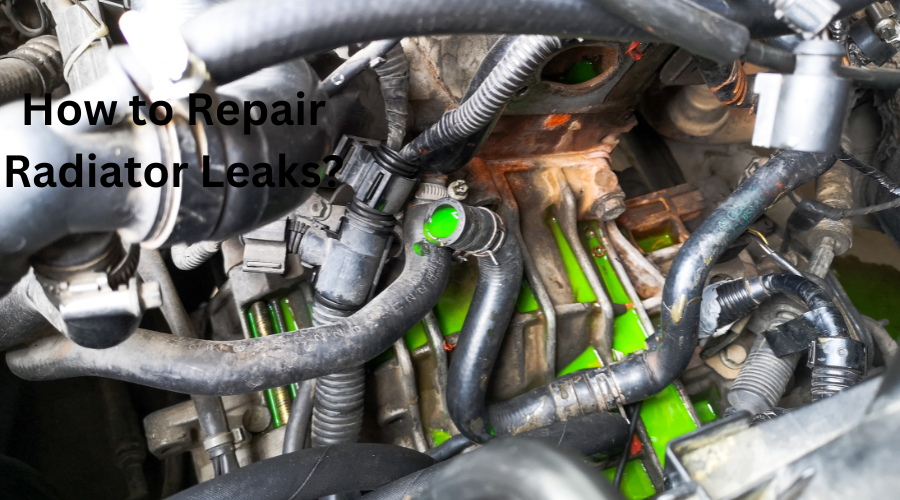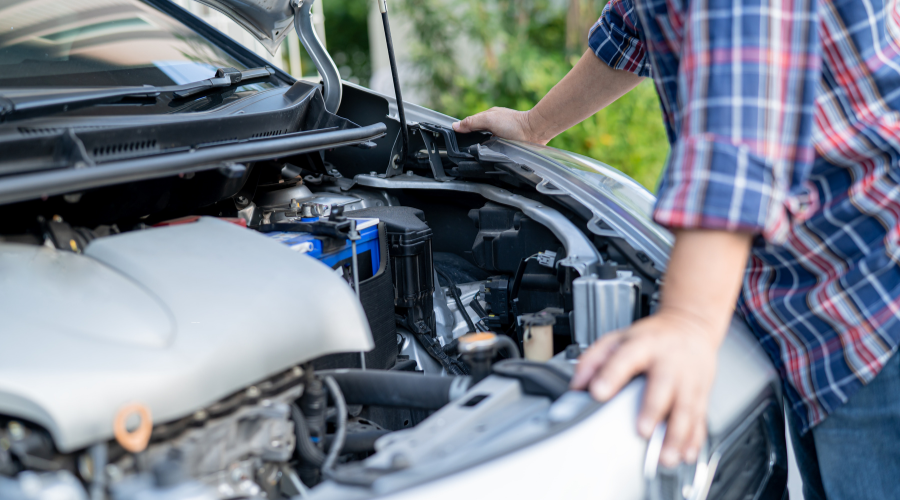

A radiator problem can get you into serious trouble if you ignore it. It can stop your car in the middle of a road with no help far and wide. That is a situation no person in the world likes to experience. Therefore, you must be aware of some signs and causes of radiator leaks if you don’t want to face that situation. Find everything that will help you in this blog.
Before you find the solution, it is better to know the causes behind the leakage of a auto radiator tank. That will prepare you to avoid any severe damage in advance. People ignore these causes even if they can avoid them to save themselves from major problems.
Too much corrosion or rusting in a radiator causes leakage. When your automobile’s radiator gets very old, it shows visible signs. You will notice massive corrosion and rusty flakes on the radiator.
Likewise, you will also notice cracks and holes in the radiator. These are either caused by the radiator’s premature expiration or by debris and physical damage. They cause coolant leakage, which leads to overheating.
If your radiator is leaking coolant, check the radiator pressure seal to see if it is loose or damaged.
One of the leading causes of leakage from a radiator is wear and tear on hoses. If the hoses have too much wear and tear, they will lead to leakage.
If there is excessive pressure or heat on a radiator, it will lead to coolant leakage.
Some signs of radiator leakage will tell you when to repair or replace your radiator before it worsens. You must not ignore them, as your vehicle will quickly overheat and stop in the middle of the road.
• There will be apparent holes or cracks in the radiator.
•Your engine will overheat faster than usual, and the temperature rise on the dashboard will be different from usual.
• There will be frequent low coolant levels and visible leaks under the car. Even if you have replaced the coolant recently, it will still show a low level when you check it.
• Some people also notice discoloration of coolant. It also shows that the coolant is mixing with rust.
• Liquid marks under the car when you leave your car for some hours. That is a coolant puddle, which shows leakage signs.
• Another sign is the grey smoke or steam coming from an engine bay.
This section is only for emergencies because a permanent solution is the right decision. People who ignore the above signs of a faulty radiator face unlikely situations. These situations lead to DIY steps or quick hacks, which can only support a driver for a few minutes or hours. Remember to go for permanent repair or replacement of the radiator from a professional.
Find a reliable radiator sealant at a supermarket or online for a temporary fix. Pour it into the radiator to seal all the minor cracks and holes. Since it is suitable only for tiny damages like cracks and holes, you can not use it for significant damage. If lining or unnoticeable cracks exist, pour radiator sealant to cover the damage temporarily.
Another temporary solution is epoxy, which will help with both tiny and slightly large cracks. You can temporarily repair these damages by mixing epoxy tubes to make a solution. Take a small quantity from both tubes of epoxy and mix it properly. Then, apply it quickly to every possible crack or hole before it starts drying. Leave it for hours to bond strongly with the radiator’s surface. Make sure it is high-temperature epoxy to deal with heat.
If there are large holes or significant damage on the radiator or hose, neither sealant nor epoxy will work. You must do something else to drive your car to the nearest mechanic. For that, your radiator must hold coolant to reach the destination. Therefore, you will use duct tape, aluminum foil, and bubble gum. You can use duct tape alone or in combination with all three items.
Apply the duct tape properly in different layers to hold the coolant. You can also paste bubble gum on aluminum foil and then stick that foil with duct tape on the hole or crack. It will give you enough time to reach a mechanic for permanent repair or radiator replacement. You can do that on the radiator’s metal surface and damaged hose.

The only solution to a damaged radiator or leakage is a permanent fix. It is better to approach a professional because that person knows how to complete the job perfectly.
A professional will use solder or welding to repair your damaged radiator. That person will locate the damage and repair every damaged spot to prevent leakage in the future. The welding process ensures a strong metal patch to cover every minor and considerable damage in the radiator.
If it is about damaged hoses, the same mechanic will replace them with new ones. It will increase the expenses, but that is the only solution for long-term relief. Since hoses are made of plastic or rubber, there is no chance of welding or any patch. Replacement is the right option for them.
If it is about a faulty radiator cap, the best option is to replace it. You can also do that if it is the only reason the coolant leaks. A mechanic has more expertise to choose the right size and pressure when selecting a radiator cap.
If you are doing that in your garage, don’t forget to flush the radiator properly before adding new coolant. Your mechanic will also do the same to prevent dirt or clogging when filling a new coolant. Blockage and rust can cause leaks if you don’t flush the radiator.
If you notice that the radiator has reached its end, the only solution is to replace it. Your mechanic will also advise if there are risks of new damage even after welding. A completely rusted radiator shows signs of frequent damage in the future, so it is better to have it replaced in a workshop. When you go for that, choose the radiator based on the model of your vehicle.
• These tips will prevent your current or new radiator from increasing repair costs. By following these tips, you can avoid early damage and coolant leakage.
• Inspect the coolant level regularly, about twice a week.
• Ensure you flush the radiator after a specific interval to avoid corrosion.
• Inspect the hoses regularly to detect wear and tear. If you notice too many cracks, replace them and their clamps.
• Always choose the correct coolant type for your car because different types are available.
• Check the coolant color to detect corrosion twice a week.
• Avoid overheating your car, and give it some rest during a long drive.
If your radiator is in good form, your car will be in good form. Overheating, lack of coolant, frequent leaks, and similar problems will cause problems for the engine. The only way you can prevent that is by having timely maintenance and proper replacement of damaged components.
The automotive industry is constantly evolving, with new technologies and materials continually
READ FULLMost of us don't think about our car’s radiator plastic tank until we have to. One day, eve
READ FULLThe process of locating the correct plastic tanks to use in an auto radiator seems like looking f
READ FULL